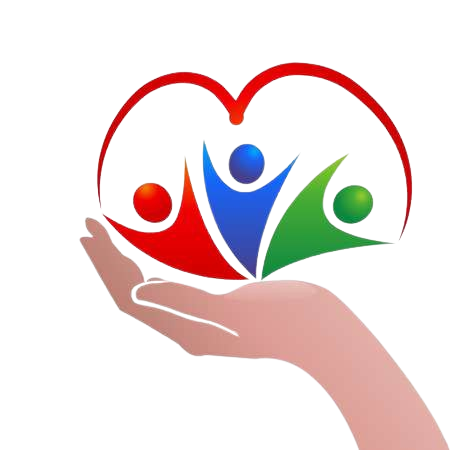Ask a group of people what “eating healthy” means, and you’ll likely hear a variety of responses.

For some, it could mean cutting back on fast food or adding more vegetables and fruits into their meals. For others, it might be about enjoying a slice of cake now and then without feeling guilty.
People with specific health issues or food allergies often define healthy eating in a way that fits their medical needs.
Ultimately, there isn’t a one-size-fits-all answer.
Healthy eating is a deeply human experience — and because we’re all different, with unique preferences and bodies, our approach to food reflects that.
Plus, your view of healthy eating may evolve as you go through different stages of life, adjusting to new circumstances and needs.
In this article, I’ll share what healthy eating means to me, how that meaning has shifted over time, and a few simple practices that help me stay on track.
How I define healthy eating — and how it has changed
Over the years, my personal definition of healthy eating has changed multiple times.
Back in college, I focused on strict nutritional guidelines. I followed the rules and prioritized nutrients above all else. But in doing so, I stopped seeing my meals as food and began viewing them as a collection of macros.
Instead of enjoying my traditional Costa Rican dish of gallo pinto — rice and beans — I saw only complex carbohydrates and plant-based protein.
Later, as I began my work as a dietitian, I felt the pressure of fitting a certain “professional” image. That led me to meticulously measure every portion I ate, ensuring I got the “right” nutrients no matter what foods I chose.
While I was technically nourishing my body, something was missing. Healthy eating isn’t just about the nutritional content — it’s also about how food makes you feel. Food is tied to culture, connection, and joy.
Today, I embrace a more relaxed and balanced approach. I no longer measure every ingredient or worry about classifying proteins or carbohydrates. I simply aim to include a variety of food groups in most meals — and I give myself permission to enjoy all types of food, including sweets and fast food, without guilt or counting.
This mindset didn’t develop overnight. It took time, growth, and self-reflection. My perspective on healthy eating has shifted as I’ve moved through different phases of life.
As long as you aim to nourish yourself and stay in tune with your body’s needs, you can define healthy eating in a way that works for you. Because at its core, healthy eating belongs to everyone.
Zooming out: The big picture matters
Like many things in life, healthy eating doesn’t always go exactly as planned.
You might get stuck at work or feel too exhausted to cook dinner — and that’s perfectly okay. Ordering food or grabbing takeout doesn’t make you “unhealthy.”
If you value flexibility in your eating habits, you’ll need to adapt when life gets busy or unpredictable.
When I find myself choosing food on the fly, I try to make the best choice available. Often, I’ll go for something close to a homemade meal — maybe a sandwich, salad, or grain bowl.
Other times, I crave a slice of pizza — and when that happens, I allow myself to enjoy it.
In these situations, I remind myself that healthy eating isn’t about any single meal. It’s about the overall pattern of choices we make over time.
A friend once told me, “One unhealthy meal won’t make you sick, just like one healthy meal won’t fix everything.” That perspective has stuck with me.
It’s not always easy
As a dietitian, people sometimes assume that healthy eating comes naturally to me — but I’m human, too. I love dessert, I get cravings, and I face challenges like anyone else.
One of the toughest experiences I’ve had was when I had to cut out most carbohydrate-rich foods to deal with recurring infections.
Carbs are everywhere: in grains, starchy vegetables, legumes, fruits, and dairy — not to mention processed foods and treats.
Technically, I was only supposed to avoid refined carbohydrates (those stripped of fiber and often loaded with sugar). But in practice, I ended up cutting out nearly all carb-rich foods, even the nutritious ones like whole wheat bread, pasta, and dairy.
That left me with a short list of foods I could still eat: fruits, oats, quinoa, lentils, beans, chickpeas, and edamame.
Some assumed this wouldn’t be difficult for me because of my profession. But the truth is, it was a tough adjustment — especially when I needed snacks on the go or wanted to dine out.
I discovered that staying organized and thinking creatively made all the difference in managing my new eating pattern.
3 strategies that help me eat well consistently
Because I believe healthy eating is a choice we make with every bite, I try to set myself up for success by keeping the decision-making process simple.
Here are three habits that I use regularly to make eating well easier:
1. Prep meals in advance
Yes, it sounds like a cliché — but meal prepping really works for me.
Cooking can take up a lot of time during the week, so I like to prepare meals or ingredients in advance. Having food that’s already made or halfway ready helps me put together nutritious meals in just a few minutes.
One of my favorite tricks is to cook a large batch of protein — like chicken or lean beef — portion it out, freeze it, and defrost as needed.
I also prep vegetables ahead of time. That way, I’m more likely to throw together a salad or cook some veggies with dinner.
To keep things interesting, I prepare veggies in different ways — I might slice, dice, spiralize, or shred carrots and zucchini so they’re easy to add to meals in a variety of textures.
2. Keep fruit visible and accessible
One small but powerful trick I use is keeping fruit out in the open — on the kitchen counter or table.
Studies show we tend to eat more of whatever food is closest to us, whether that’s fruit or junk food. I use this to my advantage by placing healthy options in sight and storing sweets out of reach.
3. Stick to a loose routine
I don’t plan out a strict weekly menu, but I do have a handful of go-to meals that I rotate.
For breakfast, for example, I usually pick between:
-
Gallo pinto with eggs (a Costa Rican staple)
-
Toast with peanut butter and eggs
-
Oatmeal with fresh fruit
-
Oatmeal-based pancakes
I do the same for lunch, dinner, and snacks — I have a few choices that I enjoy and can put together without much thought.
This makes mealtime easier and faster. It also simplifies grocery shopping, since I already know what ingredients I’ll need each week.
Final thoughts
As humans, we’re always growing, changing, and adapting — and our views on healthy eating evolve with us.
In this article, I’ve shared how my personal definition of healthy eating has shifted over time, the hardest challenge I’ve faced with food, and three practical habits that help me stay consistent.
But what works for me might not work for you — and that’s okay.
There is no perfect way to eat healthy. It’s about finding what fits your needs, your lifestyle, and your relationship with food.
Healthy eating is human — it looks different for everyone. Take time to reflect on what works for you, and if you’re not sure where to begin, a registered dietitian can help you build a personalized, realistic plan to support your health goals.


This post really spoke to me. It’s refreshing to see healthy eating discussed as something flexible and personal, not just a list of “rules.” Thanks for the gentle, encouraging approach!
Loved the part about finding joy in food, not guilt
Thank you for reminding us that everyone’s health journey looks different. The tips were simple but so impactful—especially the one about slowing down and being present at meals.